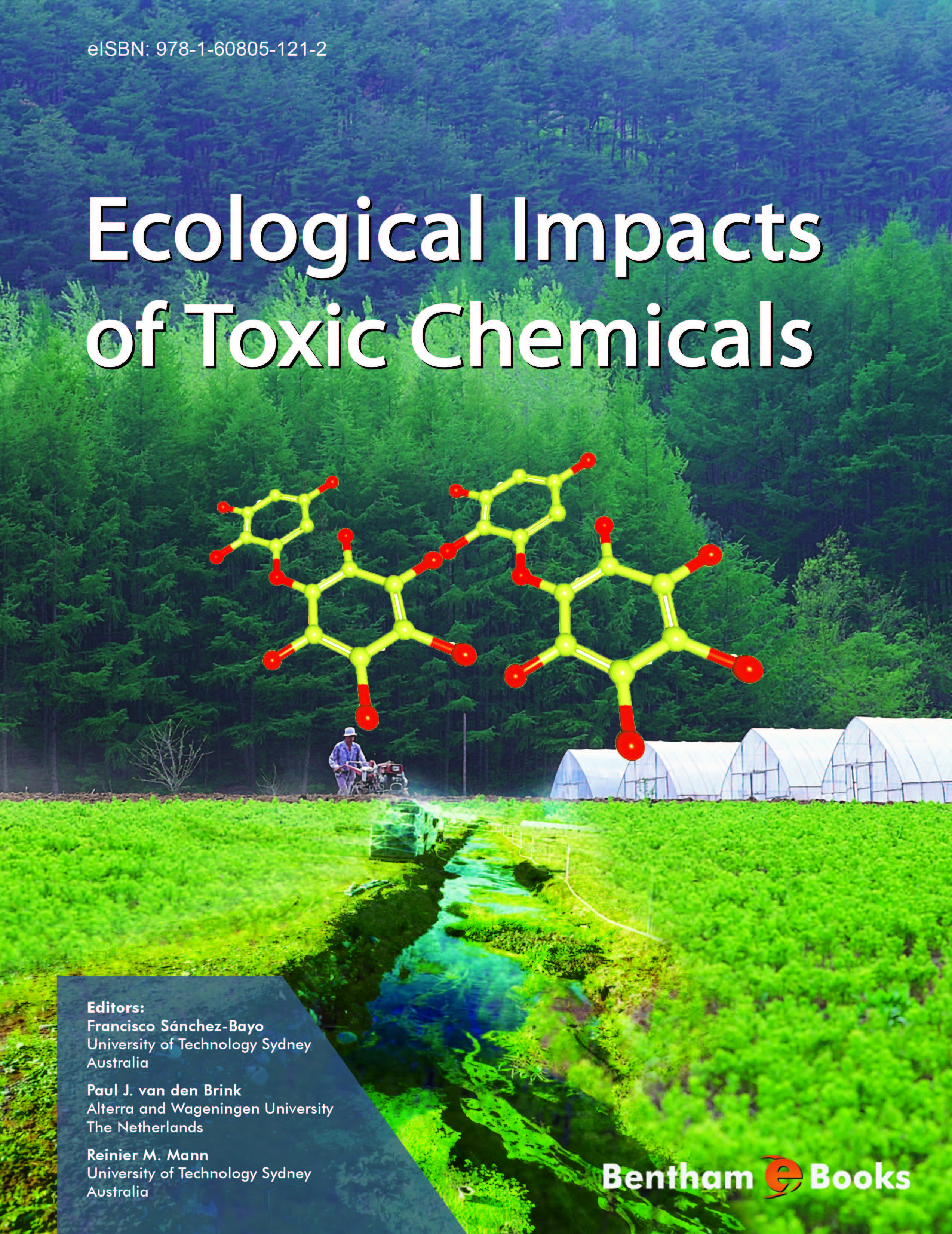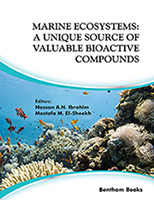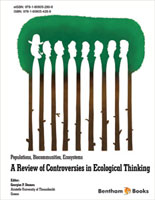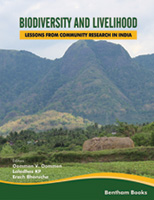“Ecological Impacts of Toxic Chemicals” is a long-overdue, comprehensive coverage of chemical fate and effects in terrestrial and aquatic environments. The editors Sánchez-Bayo, van den Brink and Mann have brought together an excellent group of international experts to systematically cover this complex topic from the source of organic and metal compounds, to their fate and impacts on land and in our freshwater and marine ecosystems. The book is very readable, serving as an excellent introduction to the topic or as a useful supplement to courses and readings in the environmental sciences at any level. Indeed, it is appropriate for the general public, students, or scientists from outside the field of ecotoxicology.
The first two chapters, by Sánchez-Bayo (Chapter 1) and van de Meent, Hollander, Peijnenburg and Breure (Chapter 2) introduce the theme of the book, covering the sources and mode of action of environmental contaminants and the toxicity of various common pollutant categories: mining wastes, sewage, industrial and metropolitan discharges. The transport and fate of metal and organic pollutants in the environment is described from a modeler’s perspective. The processes governing the movement of chemicals between air, land and water are described, along with biological transformations, including degradation and bioaccumulation. The understanding of the fate and ultimate exposure to biota is essential in ecotoxicology and risk assessment and management.
The following three chapters deal with terrestrial ecosystems. In Chapter 3, Mann, Vijver and Peijnenburg explain how naturally-occurring metals and metalloids can become contaminants when they bioaccumulate and result in sublethal to lethal effects on populations and food chains. They cover the key metals of toxicological concern which continue to be a problem world-wide: arsenic, cadmium, copper, lead, mercury, molybdenum, selenium and zinc. Agricultural pesticides have been widely used in developing and developed countries and because they are biocides, have resulted in a range of unintended adverse effects on non-target biota. Sánchez-Bayo discusses fungicides, insecticides and herbicides and how they have impacted virtually every level of the food chain, from the microbial level to birds and mammals. Thompson focuses on the forest industry’s use of pesticides (herbicides and insecticides) and case examples of lab to field studies that have assessed the risk of these widely used compounds in pest management in the forest sector. These studies are then linked to the risk assessment and management process providing for a comprehensive perspective of multiple stakeholder concerns.
The final six chapters address the many issues of chemicals in marine and freshwater environments. Schäfer, van den Brink and Liess have an excellent review of pesticide impacts on freshwater ecosystems, from primary producers, up the food chain, to fish. They explain the many complex interactions that must be considered regarding pesticide mode-of-action, exposure (particularly consideration of peak concentrations), indirect effects, and the potential for recovery of populations and communities. They describe a range of useful techniques and approaches for assessing pesticide risk from the broad to local scales, and the need for incorporating ecological knowledge into the risk assessment process. A growing concern exists for the impacts of other, non-pesticide, organic chemicals in freshwater ecosystems which is dealt with in Chapter 7 by Sibley and Hanson. Persistent organic pollutants (POPs), such as polychlorinated biphenyls (PCBs), polychlorinated dioxins and furans, polycyclic aromatic hydrocarbons (PAHs), and emerging contaminants such as pharmaceuticals, polybrominated diphenyl ethers and perfluorinated surfactants are becoming common in freshwaters throughout the world. This is due to their resistance to degradation and ability to be transported between water, soil, air and biota. Their bioaccumulation through the food chain presents recognized risks, but these risks are difficult to ascertain from studies at the lower end of the food chain. Chemicals tend to accumulate in sediments, hence biota associated with sediments, the benthos, are particularly susceptible. Borja, Belzunce, Garmendia, Rodríguez, Solaun and Zorita describe this complex issue in Chapter 8, for coastal and marine benthic communities. Their coverage begins at the molecular effect level and progresses up the ladder of biological complexity to populations and communities, and the need for integrative assessments. They document how important it is to understand biological effects by looking at the different levels of biological organization. Dying coral reefs have been documented throughout the world. They are impacted by nutrients, metals, organic chemicals, climate change and ocean acidification. In Chapter 9, van Dam, Negri, Uthicke and Mueller explain the severity of this phenomenon and the tools available for evaluating adverse effects. Of critical importance is their coverage of how adverse effects and risk is tied to exposures, which vary from short-term, to pulse-like spills, to recurring incidents from effluent discharges to river flooding. These later, chronic and repetitive events are likely to decrease the resilience of reef organisms making them more susceptible to climate change and acidification. In contrast to the previous two chapters, Hylland and Vethaak in Chapter 10 focus on contaminant effects on water column organisms, often referred to as pelagic organisms which fuel the world’s ocean ecosystems. The various ways of assessing pelagic effects are reviewed, along with the unique strengths and limitations in the context of making environmental management decisions. Better monitoring of the pelagic zone is critical for long term monitoring programs and effective ecosystem management. Finally, in Chapter 11, Moore, Kröger and Jackson inform the reader of how aquatic ecosystems are so efficient at transferring, transforming and sequestering pollutants, thus reducing their risk to organisms and ecosystems. They focus on the successful use of phyto-remediation of organic and inorganic pollutants.
Together, these chapters provide a broad, timely and comprehensive review of the potential effects of chemical pollutants in terrestrial and aquatic ecosystems. Readers new to this field will not be disappointed and quickly made aware of the critical issues affecting our current and near-future world.
G. Allen Burton
University of Michigan, Ann Arbor
USA




